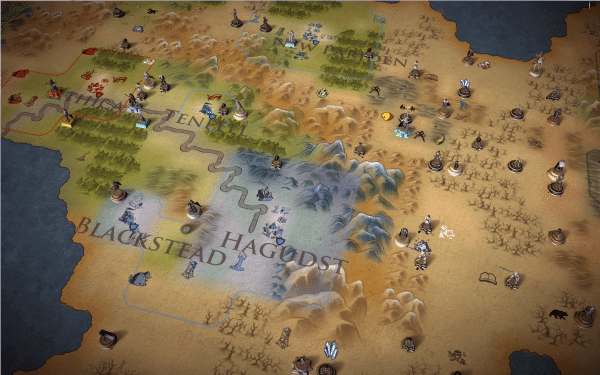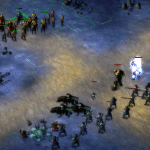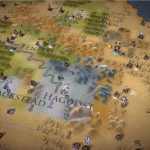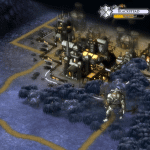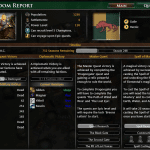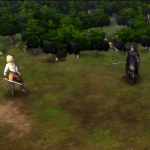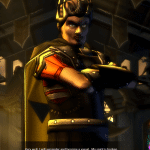Stardock Entertainment brings an ambitious title to the PC, one that promises gamers a wide range of gameplay that borrows elements from the Civilization and Heroes of Might & Magic series and weaves them into it’s own blend of turn-based tactical strategy and city-building. Did they succeed in making a compelling game in the process? Read on to find out.
The main game mode starts you off with a choice between eight premade characters with different magical proficiencies, professions, talents and factions; however, you also have the option to create your own custom character. The character creation is deep and you can spend a lot of time deciding what would work best for you. You can also choose (to a point) how your character will look both on the field of battle and in still images shown at certain points in the game.
Once your character is created, you are given another screen of options to determine how you want the game to play out; like the map size, type of map, number of factions and plenty more. Following that, you finally make it to the field of play and are dropped to a random spot on the map.
The first thing you need to do is lead your hero to a comfortable area to settle your city. Once your city location is set, it is time to start building additions to it; like towers, libraries for research, blacksmiths, monuments and more. You will also need to train your citizens for certain roles in your kingdom, ranging from scouts to militia to peasants, whom will help expand your territory. You will also be presented with options to research various skills in magic, warfare and civilization. These are very important skill trees and you need to think several steps ahead so you have the proper tools to take over the land.
Building or training is fairly easy, and done from menus under their respectively named tabs in the interface. Building costs resources and money, but with the mines you build and the taxes you collect, you will always be bringing in something; although it can take time. After selecting something to build or train, it will show up in a queue as an icon with a number near it, indicating how many turns (or seasons as the game calls them) it takes before you can make use of it.
The game is turn-based, you can only move each of your characters a certain distance at a time before you have to press the “end turn” button. One gripe I had with the game is that I found myself needing many turns in a row with little progress, just to get the characters I needed into position so I could do what I wanted.
You can take your main character and slowly move them across the map to explore the darkened out areas, but if you come across something that needs more than one character to defeat, you’re going to have to wait or retreat. I did have some issues directing my characters where to go. A few times I instructed my group to go to a certain tile, and they took a weird, circuitous route to reach it, which ended up disturbing a group of opposing forces… not what I wanted! There are secrets to find, such as loot or side quests given by NPCs (which usually reward gold or items). You can also find NPCs called “champions” that will join your faction. These characters are already developed to a certain degree, and come in very useful.
As you are doing all of this, you need to remember there are other computer controlled factions hidden on the map doing the same thing as you. Some are good and may be willing to make treaties with you, while others just want to kill everything and take over land. So take that into consideration while building up your armies and before hitting “end turn”; every round needs to be efficient and well planned. I found that out the hard way because by the time I had enough warriors, one faction had taken over two thirds of the map.
Unruly factions will threaten you most of the time, but you can ward them off for a time by forming treaties that will give them gold for a certain amount of turns; or sometimes will just assure them that you will stay off their land. I would have liked to have seen a bit more interaction between you and other factions, with more choices in the dialog. As it stands, the choices were essentially “Lets be friends.”, “I’m going to wipe you out!”, or “Goodbye.”
The game ends when your faction points are wiped out completely, and combat is inevitable.
Combat in the game is simple. When you come across a group of opposing forces, all you have to do is send your group into their square on the grid. The number of people in the grid square can vary, but it is represented by the number of characters seen. Once the battle has started, you can have it battle automatically (you see no action at all and are just told the outcome) or, if you are more of a hands-on type of gamer, you can direct the battle yourself. Combat is performed on a gridded battlefield, and everything is turned-based. You move your individual characters around per turn depending on their turn rate and powers. Moving your characters around the board is similar to other strategy games like Tactics Ogre or Final Fantasy Tactics.
Combat honestly didn’t feel very rewarding, because the character animations are a bit stiff, and due to the small size of your warriors, some of the detail is lost. If your party is completely killed off in the battle, you will lose your trained civilians, but your main character and any champions you had in the group are returned to your city and are out of play for a number of turns. They also suffer ailments caused in battle, such as broken bones and wounds, that affect them for longer. Your main hero and champions gain experience points after each battle, ultimately leveling up, which then gives you an option to upgrade a skill of your choosing. You can also swap weapons and armor in and out at anytime before, during or after battles.
When you are eventually done with the main play mode, you might want to check out the scenario mode, where you are dropped into a game that is already fairly developed for you. This mode also offers a story that is presented through text pop-ups that essentially tell you what’s going on, where to progress and explore. I found this rather nice, but it was a bit stiff in the story telling.
Graphically, the game is nice looking, albeit looking a bit dated in a few areas. It reminded me a lot of the first Diablo in the way the map angle is presented. Character designs on the field of play are a bit too small for my liking, so you lose some detail in your created character. Map detail is okay, but nothing that we haven’t seen in other games like this. Character animations get the point across, but I wish there was a bit more life to the map.
I was rather pleased with the general score of the game, and found the music rather relaxing as I explored hidden areas on the map. The rest of the sound effects seemed uninspired and felt rather bland.
I like a game that tries to combine several different gameplay styles, but the overall experience seems rushed and unpolished. It offers plenty of content and skills, yet doesn’t seem to excel at any particular one. Elemental: Fallen Enchantress does a lot of things right but never truly delivers on any of them. Hopefully in time there will be updates that improve certain areas of the gameplay, which could turn this game into a diamond in the rough.

